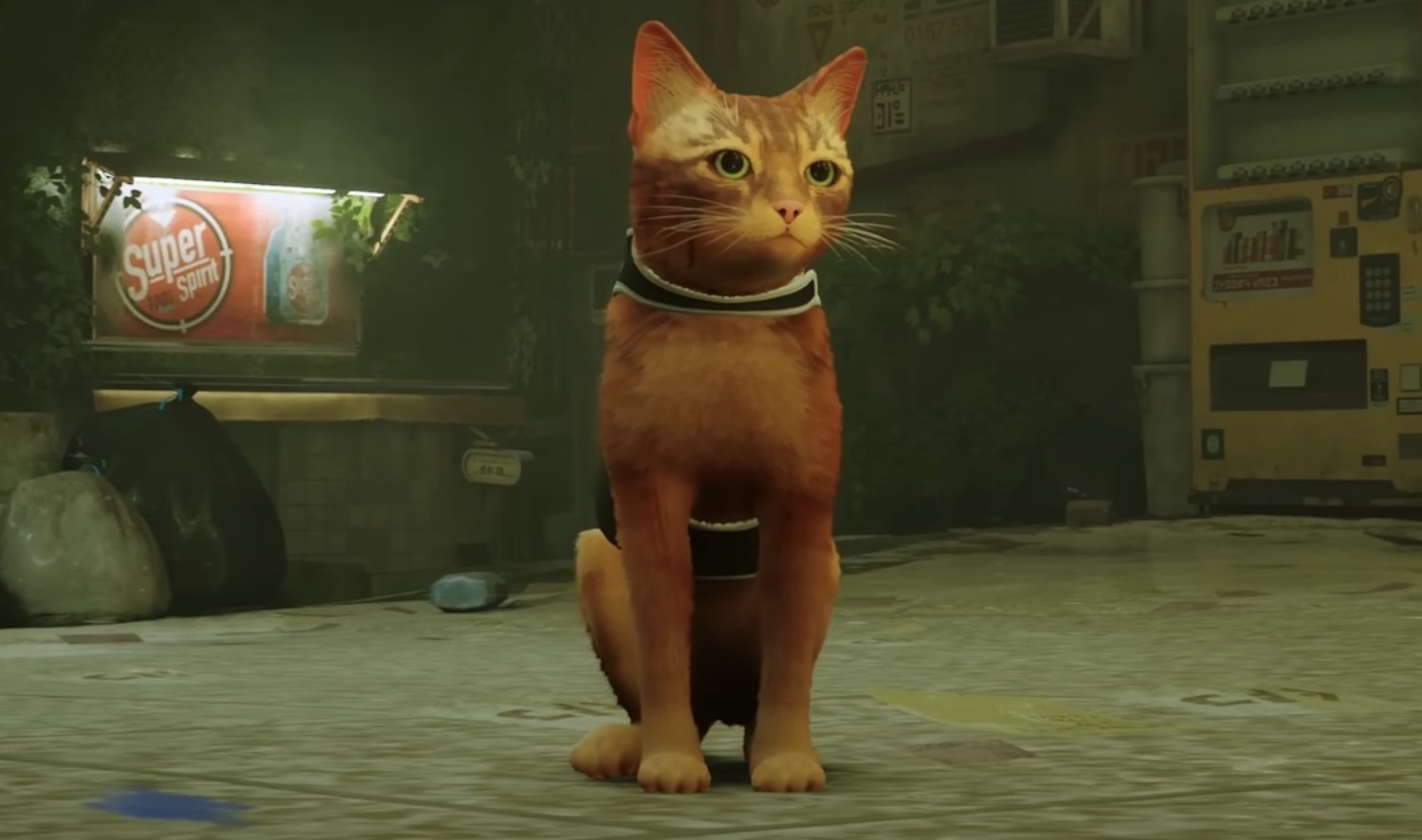Stray, a game released by BlueTwelve Studio, asks the player to navigate their way through a world free of humans that is still dense with the things they left behind: robots who perform mechanical simulacra of human life, a society stratified along both geographical and class lines, evidence of ecological ruin. You know, the classics. The novelty here is the playable character: You're a little kitty cat.
You may have encountered most of Stray's thematic and interactive beats before, in dozens of works of popular culture, across several forms. The game's narrative arc reminded me of Abzû's. Like Blade Runner, it's concerned with the relative humanity of robots. The environment borrows heavily from the demolished Kowloon Walled City. It plays like a pared-down version of an Uncharted game, or as one critic noted, a Valve game. You move your cat into position to press a button just to jump. Occasionally, you have to run away from enemies, who exist but aren't the focus.
Stray is mostly about spending around five hours of gameplay being a soft orange cat, who meows, scratches furniture, and curls up into a tiny ball and naps like a baby angel. One button on the controller is dedicated to letting you meow whenever you want. There's a variety: rasps, mewls, yips, whines, and coos. The cat's voice actor, Lala, did a great job. The developers went for feline verisimilitude, and the clearest sign of their success is the game's apparent popularity among real cats.
Though I occasionally found myself wanting more out of Stray—the stealth sequences can feel disappointingly short—the groundbreaking part of the game is that you are playing as a cat. Whether or not that is enough to support an otherwise limited game is up to the player, but for me, it was. Feline locomotion is fascinating. Cats seem to slink and leap and contort themselves as if the rules of gravity don't always apply to them. It's fun to zip around as Stray's feline protagonist, making seemingly impossible leaps and squeezing into tight spaces.
The longest two of the game's 12 chapters set the player-cat loose in densely populated urban zones and send them on a series of fetch quests. The quests themselves are completely forgettable, but the intention is to let the player explore the environment. It's oddly liberating to inhabit a video-game world made for creatures far larger than you. The cat can break all of its rules, scale seemingly forbidden surfaces, and profane any semblance of architectural propriety. Why shouldn't I knock this stack of paint cans over, then go through a secret window into the laundromat to steal some stuff? It's what any cat would do.
You can take a nap on the cowboy robot in Stray pic.twitter.com/KKL2ks5vku
— Can You Pet the Dog? (@CanYouPetTheDog) July 19, 2022
At the start of Stray, the cat protagonist is living in some ambiguous abandoned structure, palling around and doing cat stuff with a few buddies. The game's action kicks off when the player-cat misses a routine jump and tumbles down into a deep dark hole, finding itself in a subterranean city walled off from the outside world (whatever that still means after some nonspecific apocalypse). The goal is to get back to that outside world. The player-cat gets the help of a flying robot named B12 that acts as translator and Swiss army knife as you team up with a series of person-sized robots called Companions. When you leave the urban safe zones, you're pursued by hordes of a demonic, vaguely rodential critter called a Zurk. The mysteries unfurl as you climb higher. Aside from perfecting the design of the cat, Stray's greatest strength is its beauty. There are no health bars or resource meters on the screen—just a little buddy.
While playing Stray, I spent a pleasant half-hour winding my way through a handful of houses in the city's slums without a goal, admiring the fine attention to detail in environments that were ancillary to the game's central story. The shine of the neon contrasts pleasantly with the dank claustrophobia of the cityscapes. You can feel the vestiges of human life left over in the cities. When you leave the area for brief forays through enemy-filled zones, the alien architecture feels appropriately spooky. Dirt and garbage and brick give way to something that feels more alive. At one point in your journey through a hostile area, you come across a monstrous wall of eyes, connected to other eyes by a gargantuan meat-web. It clearly has something to do with the horde enemies, and the scale of it especially foreboding. But you don't confront it. There is no final boss showdown with the network, or whatever it is, because that wouldn't be thematically coherent. Cats are stealthy animals, not brawlers.
The perfect cat and the rich texture of the game make up for what is admittedly pretty thin gameplay. There are a few puzzle sequences, none of them challenging or novel. You get something that resembles a gun for a few sequences, but there's nothing noteworthy there either. The gameplay switches from action to stealth in the latter half, and it's equally simple. The interactivity of Stray sometimes feels like it gets in the way of the game's real strengths, especially when the exploring is interrupted by having to do some Video Gamey stuff: Fetch an item, trade it for another item, have an NPC process that into another item, then give the processed item to a different NPC who can repair a different item to allow you to advance through the game.
The quests never drag long enough to lapse into tedium, and Stray has become an unlikely hit because it really nails the things that set it apart from all the works it is so similar to. It has the good sense not to overstep its bounds. If this all sounds a bit inconsequential or cute, well, it is. Sometimes it's fun to play as a tiny cat that runs around and meows.







